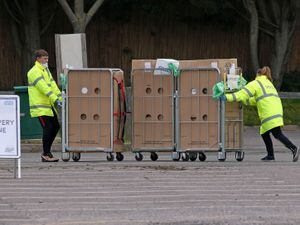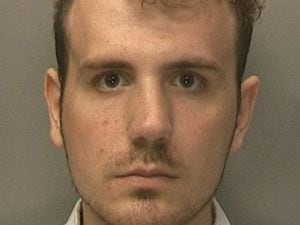Serco boss defends lack of work completed by contact tracers
The average contact tracer has contacted just 2.4 people, reports suggest.

The boss of outsourcing giant Serco has defended the fact that 10,000 contact tracers have only spoken to an average of 2.4 people each.
Rupert Soames, chief executive of Serco, which is among several firms that are recruiting, coaching and managing contact tracers, admitted that the Test and Trace system has “more capacity than we need” but said the Government “had to start somewhere”.
Mr Soames also admitted that 20% of contacts are untraceable as individuals who tested positive do not know them well enough to have their personal details.
His comments comes as an anonymous contact tracer said she is effectively being “paid to watch Netflix”.
NHS England’s Test and Trace system, which is being led by Baroness Dido Harding, relies on identifying people who have been in contact with a positive case and getting them to self-isolate.
But the programme, run by Serco and Sitel through a contract reported to be worth up to £108 million, has faced questions about performance and value for money.
Last month, health expert Professor Sir Chris Ham wrote an opinion piece in the British Medical Journal urging the Government to give local leaders control over the service.
Mr Soames told BBC Radio 4’s Today programme that the Test and Trace programme is “improving all of the time”.
“I think we need to get this into proportion. You’re giving me the numbers saying that we’re tracing 50% of contacts, let me tell you that 96% of the people that we talk to agree to self-isolate.
“So we’ve got a very, very high success rate of people that we get to contact,” he said.
Pushed on the fact that this is only the known contacts that tracers have been able to reach, Mr Soames added: “So there’s been 218,000 already contacted.”
Questioned again on why tracers are still only managing to get hold of half of people’s contacts, Mr Soames said: “If somebody rang you now and I said: ‘Tell me everybody that you have met, been in contact with, in the last 48 hours, and tell me on the telephone, give me their contact details’, how many do you think that you’d be able to reel off of the top of your head?
“And the fact is that about 20% of the contacts that people give us say: ‘I know I sat next to somebody on a bus on the way in but I don’t have their contact details. I’m sorry, but my brother-in-law brought around a friend last night, I don’t have their contact details.’
“So there is an element of that, and it is about 20% at the moment where people can’t remember or never knew the contact… the details of where they were.”
Asked why so many contact tracers are doing so little work, Mr Soames added: “Let me tell you we’ve got 10 Nightingale hospitals lying vacant, we’ve got 30,000 ventilators that are not being used.
“The Government has to start somewhere with capacity and the fact is that we’ve got too much capacity, or more capacity than we need right here, right now, today.
“But naturally the Government has taken a decision to over-provide to begin with on the basis that we can always reduce it.
“I mean we could increase the number of calls per agent by reducing the number of agents who are there and I am pretty sure that the Government, over the coming weeks, is going to start reducing the number that we have.”
A leaked email from Mr Soames in June disclosed that he wanted the system to “cement the position of the private sector” in the NHS supply chain.
In the email forwarded to staff, he said: “If it (the contact tracing system) succeeds… it will go a long way in cementing the position of the private-sector companies in the public-sector supply chain. Some of the naysayers recognise this, which is why they will take every opportunity to undermine us.”
He asked managers to ensure staffed behaved in a way to survive the “Daily Mail test… that you would not mind their behaviour being described on the front of a national newspaper”.





